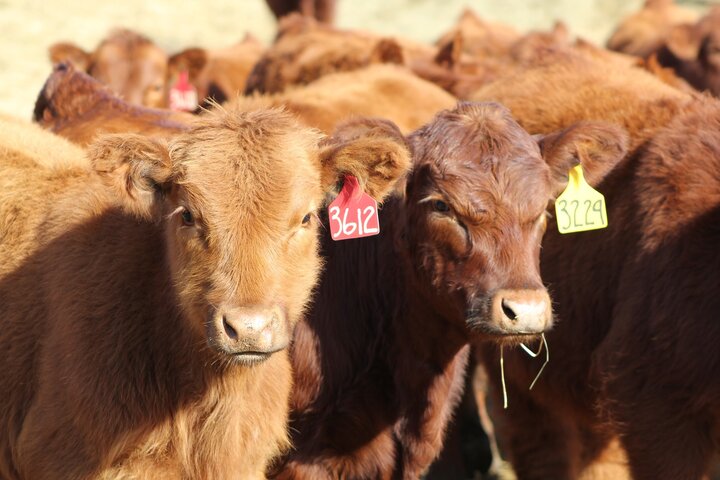The fall run of feeder cattle is underway across the United States. Producers are now left with the decision to retain or sell weaned calves. A financially sound business decision is one where what it costs me to put on weight is less than what the market is willing to pay me to put it on. While that decision is straightforward, some limiting factors can impact these calculations.
The availability of feed resources is the first limiting factor. Winter feeds can include distiller grains, crop residues, cover crops, and stored grass or hay, among others. If the feed is priced at its true opportunity cost, all producers within a similar geographical/feed region face a similar cost of gain constraints. The simplest way to think of opportunity cost is to ask yourself the question, “how much could I get for this product or service if I were to sell it in the open market?” Since you could sell/charge that price, that same price/charge should be accrued to your operation. Avoid the temptation to pencil in the “family/friend” rate, even if you may be actually getting that rate because it helps one understand the true market forces that are at work. Producers looking to calculate their operations cost of gain can use feedstuff price data from USDA-AMS available for free at https://www.ams.usda.gov/market-news/custom-reports. For producers looking to use crop residue to add weight, the Crop Residue Exchange (https://cropresidueexchange.unl.edu/) is a helpful resource that can help match crop producers and livestock owners. After you have gathered all these prices for the ration you are going to feed and the resulting average daily gain, the total cost of gain is simply the summation of all the cost times the lbs. fed for each feed resource.
The demand from the market to put on additional weight is the second limiting factor. A producer that has a 550 lb. steer can choose to sell that calf at weaning or put on additional weight. It's important to note two things that are frequently misunderstood in the “retain to put on more weight” decision. First is that producers are only paid for the additional weight that was put on post-weaning. This is because when a producer decides to retain, they forgo immediate profits and essentially buy the cattle from themselves at the market price. They ultimately sell the cattle back into the market after a preconditioning or backgrounding program. Second, the price received ($/lb.) is higher at weaning compared to heavier cattle sold after a backgrounding or preconditioning program. This decline in $/lb. as weight increases are known as the price-weight slide. If this did not occur, then there would be an endless incentive to put on more weight. Understanding these two factors that are built into the value-of-gain calculation provides clarity on what producers are paid for. The website www.beefbasis.com is a great user-friendly website that helps producers easily calculate their own cost of gain.
To illustrate a straightforward retention decision, I used a sample cow-calf operation in Nebraska that is looking to decide between selling 66 head of 450 lb. weaned steers calves in the middle of November or retaining these weaned calves and selling them in the middle of April at 750 lbs. Using this sample operation and current/forecasted feed prices from USDA-AMS, the calculated cost of gain was between $60-90 per cwt depending on the price assumptions and feed used with a 2 lb. per day gain. Using Beef Basis assuming the type of cattle and marketing dates detailed above, the calculated value of gain for that operation selling into the Lexington, NE livestock auction is $121.13 per cwt. Using this sample operation, there appear to be some financial incentives to retain cattle and put on additional weight. That said, producers must consider unique factors that could either improve the value of gain or decrease the cost of gain such as additional premiums received from cattle at the time of sale or the ability to get cheaper feed resources from a relative or friend.
Interviews with the authors of BeefWatch newsletter articles become available throughout the month of publication and are accessible at https://go.unl.edu/podcast.

